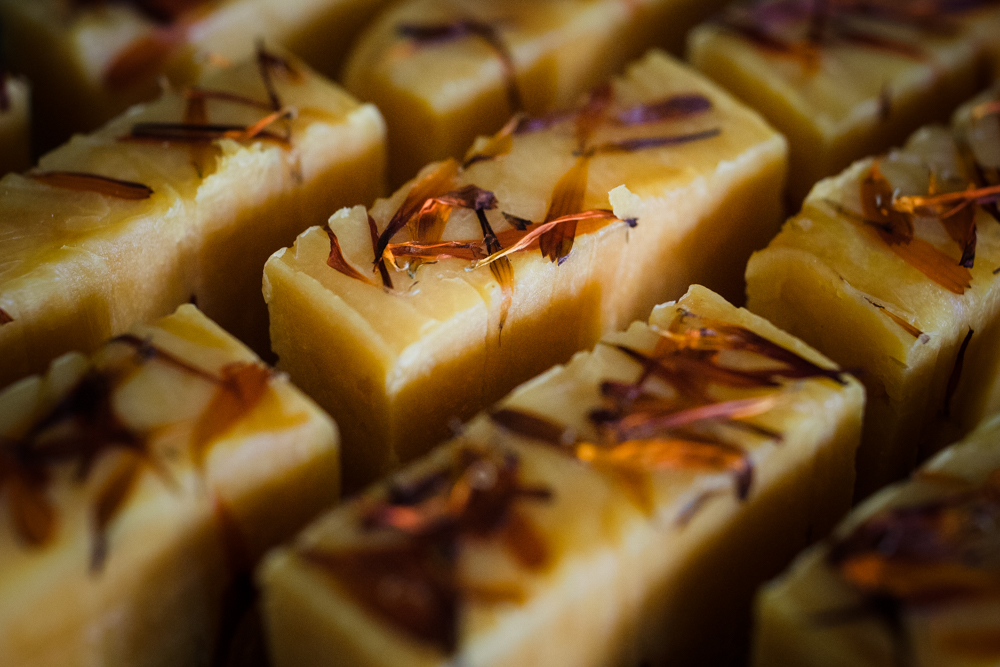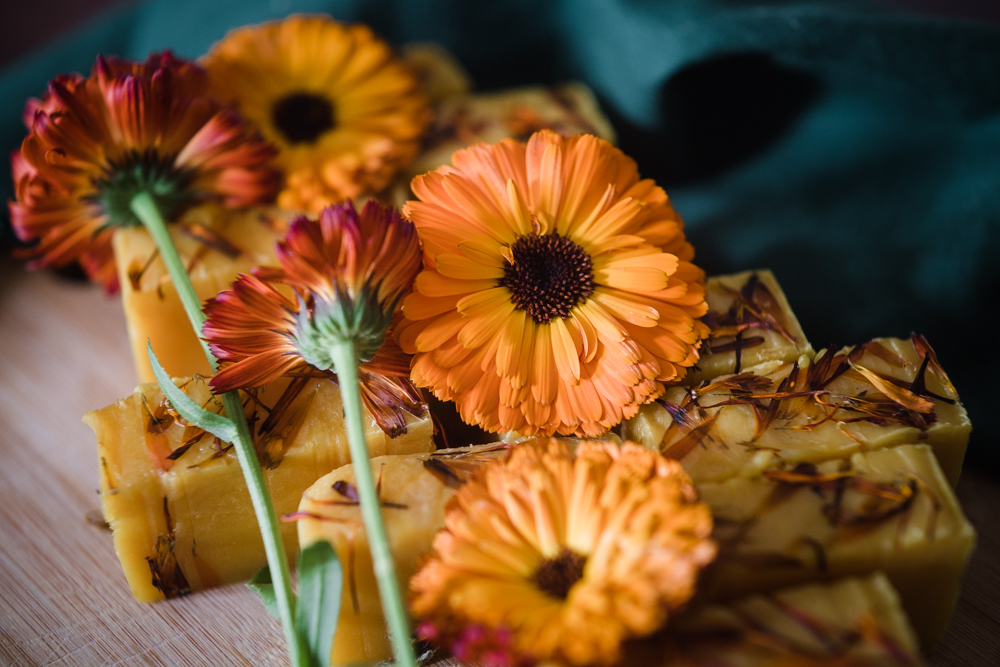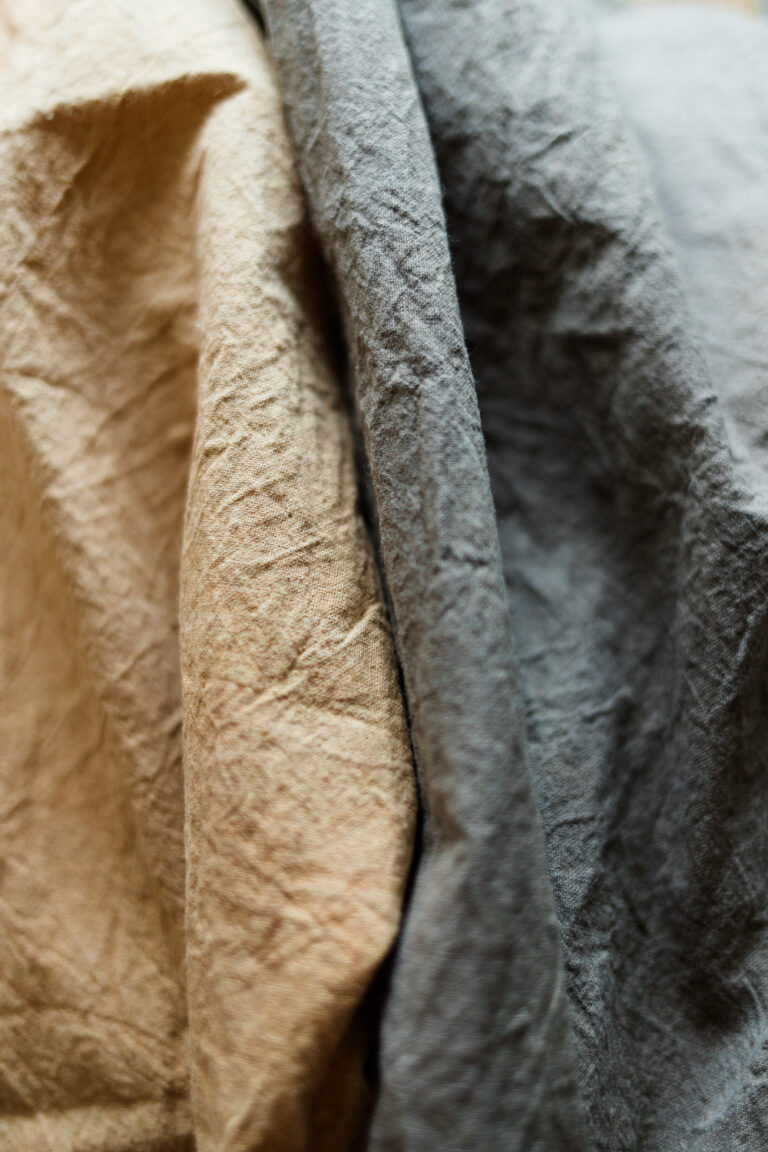How to Make Calendula Soap With Fresh Flowers
Home »
15.08.2023

I recently made some cold process soap with fresh calendula flowers I grew on my allotment, and made a video sharing the method and recipe. I thought I’d share it as a blogpost too as from time to time people find my blog through search engines, and perhaps you’ve found this post by searching for a recipe for calendula soap yourself.

I made it with fresh flowers rather than dried as they are in season at the moment and so I have fresh calendula flowers available to me, but if you can only get your hands on dried petals then you can use those too. You’d need to experiment with amounts, as dried calendula flowers are more concentrated per gram than fresh calendula flowers. Perhaps start with 5g dried petals per 500g oils and see how that turns out.
Safety warning and advice
This recipe uses sodium hydroxide (NaOH), also known as lye or caustic soda. Lye can cause nasty burns to your skin and damage your eyes and lungs if it is handled incorrectly. Always wear thick rubber gloves when handling dry form lye crystals and water in which lye has been dissolved. You can wear long sleeves and eye protection too, as a precaution, and you should work in a well ventilated space so as not to breathe in any vapours.
Work slowly and methodically, and take your time. There’s no need to rush. If possible, use separate equipment for soapmaking from the pans and utensils you use to prepare food. If this isn’t possible, for example if you only have one hand held stick blender then don’t worry, but you will need to make sure that you are very thorough when it comes to washing up to ensure that your equipment is washed and rinsed thoroughly enough that all traces of soap batter and unreacted / raw lye have been removed.
Always check any recipe you find online, including this one, using one of the many online lye calculators. You can do this by putting the fats into the calculator and double checking that the water weights, but most importantly the lye weight, are correct. Excess lye is dangerous, which is why checking recipes is a good habit to establish with soapmaking.
Lastly, ALWAYS add lye crystals to water and NEVER add water to lye crystals. This is because lye reacts with water exothermically, and it is safest for the heat to be released into cold water than into the surface of your vessel which may crack or warp under extreme heat. Cold water absorbs the heat and keeps the lye solution at a safe working temperature. I always use tap (faucet) water which has been stored in my fridge.
Recipe for calendula soap:
66g NaOH (lye) crystals
190g cold water
350g olive oil
75g shea butter
75g coconut oil
10g fresh calendula petals, equivalent to 5 or 6 fresh flowers, plus extra for scattering on top of the bars as decoration
1tsp rose geranium essential oil (optional)
Method, as demonstrated in the video:
Measure the water and petals, and stir the petals into the water.
Wearing protective rubber gloves and long sleeves, measure out the lye crystals and slowly add them to the water, stirring slowly but continuously. If you don’t stir, the crystals can form a lump at the bottom of your jug.
Set the lye solution aside, somewhere safe, like your otherwise empty kitchen sink.
Weigh the oils, heating the solid oils first if it is a particularly cold day, and then slowly add the lye solution to the oils.
With a stick blender, blend the soap, taking care to keep the stick blender on the bottom of your bowl to prevent the mixture from spitting and splashing. Keep blending until you reach trace. With olive oil soap, this can take 10 to 15 minutes. Be patient, it’ll get there eventually. Trace is reached when you can drop batter from the stick blender onto the surface of the soap batter in the bowl, and it doesn’t immediately sink back in, but instead leaves a trace.
Scrape the batter from your stick blender, placing dirty utensils into the sink to keep your work space clean and tidy.
Pour the soap batter into a soap mould, and level the surface.
Wrap the soap mould in a towel, which will help the mould retain heat and force the soap through gel phase.
After 12 hours you can remove the towel, and leave the soap to set in the mould for 4 or 5 days. This extended period of time is necessary for olive oil based soap.
After 4 or 5 days, scatter fresh or dried petals on top of the soap, giving them a little spray of water to help them stick to the surface. Wait another 48 hours before unmoulding and cutting your soap into bars.
This calendula soap should be stored somewhere cool, dry, and dark, with space between bars. I set mine on greaseproof (parchment) paper on a wooden tray, in a dark cabinet. Leave them for 6 to 8 weeks to fully cure, which removes excess moisture from the bars making them harder and longer lasting in the shower or for handwashing


Leave a Reply